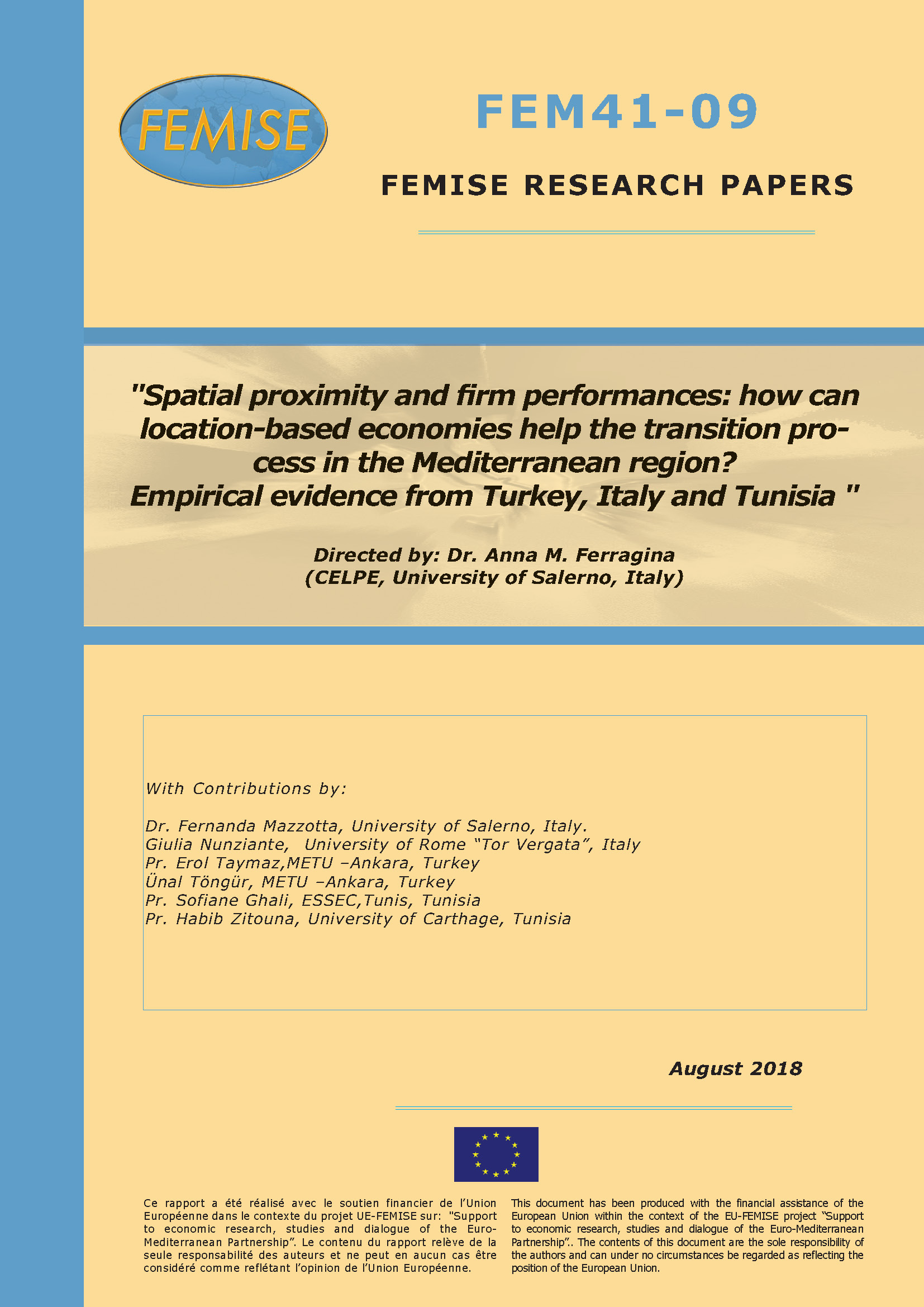Summary :
 The aim of this project is to investigate the productivity impact on firm’s performance stemming from location-based economies due to agglomeration of firms, clustering of innovation and localisation of FDI in three Mediterranean countries, Turkey, Italy and Tunisia. More specifically the research addresses three main questions: 1) the relationships between agglomeration economies and firms’ productivity; 2) the role of innovation spillovers at spatial level taking into account geographical and sector clustering of firms; 3) the spillovers from foreign MNEs at regional and sector level.
The aim of this project is to investigate the productivity impact on firm’s performance stemming from location-based economies due to agglomeration of firms, clustering of innovation and localisation of FDI in three Mediterranean countries, Turkey, Italy and Tunisia. More specifically the research addresses three main questions: 1) the relationships between agglomeration economies and firms’ productivity; 2) the role of innovation spillovers at spatial level taking into account geographical and sector clustering of firms; 3) the spillovers from foreign MNEs at regional and sector level.
The choice of Turkey, Italy and Tunisia as case studies is based on the relevance that economies of agglomeration play in their economy. Italy provides an important benchmarking and is the most critical observatory among North Mediterranean countries for analysing the positive and negative impact of regional agglomeration of activities due to the traditional relevance of regional clusters of development (Industrial Districts) and big regional divides. Turkey and Tunisia are two very interesting case studies due to the emerging innovation clusters over the last years, marked by a large diffusion of science parks, innovation clusters, incubators, special economic zones (SEZs), Centre business districts (CBDs) (in Tunisia) and by an increasing role of multinational corporations (MNC).
Overall, the estimation results suggest some common findings for the three case studies: there are significant productivity enhancing agglomeration effects, in particular there are significant spillovers between firms operating in the same sector and region, spillovers from innovation at local level are also strong, and higher output of foreign firms produce positive spillovers on productivity in the province. However, spillovers are specific to technologically more sophisticated firms.



